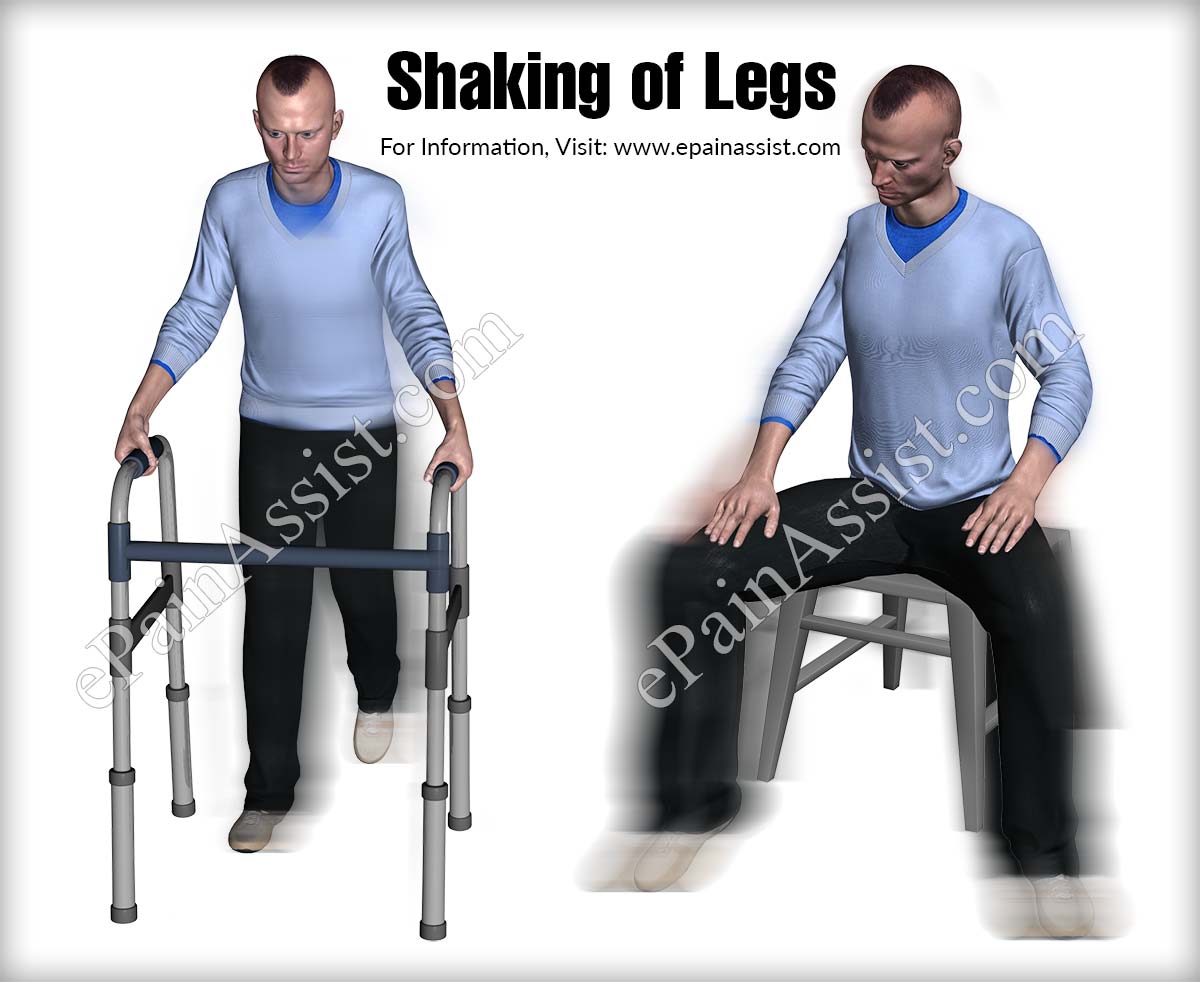There are many causes for shaking of the legs or leg tremors.1 They may develop due to a central nervous system disease or due to thyroid gland problems. Excessive coffee or alcohol intake may also cause tremors in the legs. Certain medications may also cause leg tremors and sometimes the cause for the tremors cannot be identified by the doctors. When an individual experiences shaking of the legs or leg tremors, one’s legs start to tremble or shake uncontrollably. One or both the legs can be affected. Tremors can affect different parts of the body or only one leg. Individuals who have reached middle age and senior citizens are more affected by these tremors; however, they can affect anybody, any gender, at any age.
Conditions which cause shaking of the legs or tremor in the legs are Parkinson’s disease (PD), essential tremor, and orthostatic tremor. Patients who have early-onset of Parkinson’s disease are more prone to having leg tremors, which involve their feet or legs. Shaking of the legs or leg tremors can be present upon sitting or lying. The “rest” tremor which commonly occurs with Parkinson’s disease (PD) is also accompanied by other Parkinson’s symptoms such as bradykinesia, stiffness of muscles and difficulties with gait and posture. One of the most incapacitating forms of shaking of the legs or leg tremor is orthostatic tremor. It is not obvious or visible to the naked eye; however, it can be palpated or recorded by EMG. Patients commonly experience this tremor upon standing and it feels like an uncomfortable sensation or leg cramps. This sensation is relieved after the patient sits down or lies down.

Uncontrollable Shaking Of Legs: Leg Tremors While Sleeping
Shaky legs can be confused with “restless legs syndrome or RLS,” which is relatively quite common, but not recognized that much. The cause of restless leg syndrome or RLS is usually wrongly blamed to simple anxiety. Restless legs syndrome can be hereditary or it may occur as a complication of Parkinson’s disease (PD) and other peripheral neuropathies. Restless Legs Syndrome or RLS commonly affects the legs or the lower limbs; however, other body parts can also be involved. Symptoms include restlessness, a “creepy-crawly” sensation, and “pins and needles” sensation in the legs (paresthesias). Symptoms commonly occur at night, but can also be present during daytime. If the patient suffers from daytime restlessness, then they are not able to sit still and taking long journeys by car or airplane becomes difficult for them.
Almost all patients suffering from restless leg syndrome also have accompanying periodic limb movements in sleep, i.e. they have twitching (kicking movements) in their legs which occurs one to four times in a second. The leg discomfort and feelings of restlessness can be relieved temporarily by massaging or stretching the muscles, walking and doing other leg exercises. Medicines such as Levodopa, dopamine agonists, benzodiazepines and narcotic analgesics help in relieving the symptoms of restless legs syndrome.
Classification and Types of Tremors
- Cerebellar Tremors/Intention Tremors: Tremor can occur in any part of the body. The cause is damage to the cerebella due to a stroke or excessive alcohol intake or abrupt withdrawal from it. Abuse of certain drugs may also cause this tremor.
- Dystonic Tremors: This tremor commonly affects those individuals who are suffering from dystonia and can be relieved by rest and medications.
- Essential Tremors: One of the most common types of tremors is essential tremors.2 They can be progressive or non-progressive and commonly affect the hands; however, other parts of body such as head, trunks, legs, voice and tongue can also be affected.
- Orthostatic Tremors: As the name itself suggests, these tremors occur immediately after a person stands up abruptly. Legs and trunk are commonly affected by these tremors. It is difficult to diagnose and treat these tremors as they possess no signs or symptoms.
- Parkinsonian Tremors: These tremors occur as a result of any damage or injury to the brain and commonly affect those individuals who are suffering from Parkinson’s disease.
- Physiologic Tremors: Everyone experiences these tremors. They are not obvious or visible to the eye and get aggravated by fatigue, strong emotions, hyperthyroidism, low blood sugar or abrupt withdrawal from alcohol or coffee.
- Psychogenic Tremors: These tremors are sudden in nature and can affect any part of the body. Psychogenic tremors are a mixture of action, postural and resting tremors and abate when the patient is distracted.3
Common Causes of Shaking of the Legs or Leg Tremors
- Diseases which affect the central nervous system, e.g. Parkinson’s disease.
- Damage to the nerves.
- Certain medications such as asthma drugs, lithium, certain antidepressants and anti-seizure drugs may cause tremors.
- Sometimes there may be an unrelated medical condition for the tremors, such as problems with the thyroid gland.
- Tremors can be hereditary.
- Sometimes, the cause cannot be identified.
There are some conditions which may not exactly cause shaking of the legs or leg tremors, but they may worsen the already existing tremors, such as:
- Fatigue.
- Stress.
- Excessive caffeine intake or abrupt caffeine withdrawal.
- Excessive alcohol intake or abrupt alcohol withdrawal.
Tests to Diagnose Shaking of the Legs or Leg Tremors
- Blood tests.
- CT scan.
- MRI scan.
- EMG.
Treatment for Shaking of the Legs or Leg Tremors
Treatment depends on the cause of tremors.
- Avoiding the triggers which causes the legs to shake or cause leg tremors is of immense help in some people. In other cases, medications such as beta blockers can be used to control tremors.
- For relieving symptoms of restless legs syndrome, medicines such as Levodopa, dopamine agonists, and benzodiazepines are helpful.
- The leg discomfort and feelings of restlessness can be relieved temporarily by massaging or stretching the muscles, walking and doing other leg exercises.
- Meditation, relaxing and trying to lead a stress free life also helps.
- For severe tremors, deep brain stimulation or the surgery may be required.
